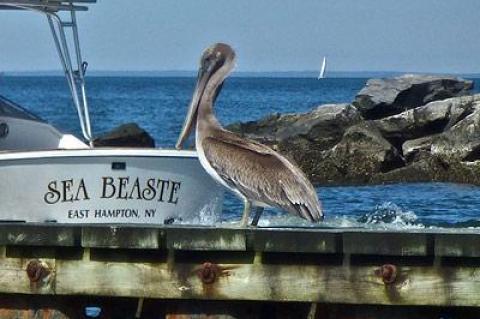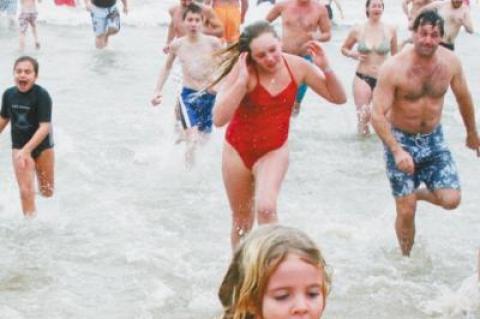The leaves are falling. It’s cold. No Indian summer this trip around the sun. No doubt a frigid winter is in store.
Outdoors
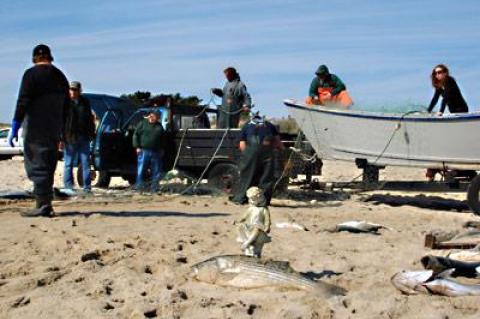 On the Water: Frozen Eels in My Sock
On the Water: Frozen Eels in My Sock“However ridiculous it may sound to have a queen, the pound is worth more than our dollar,” was Harvey Bennett’s way of announcing that the British were not only coming, they are here.
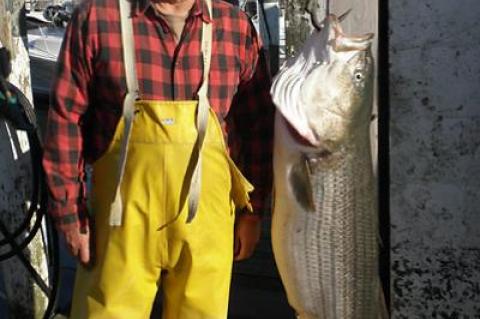 Fish Strained the Scales
Fish Strained the ScalesWhen he ventured forth with a bag of live eels on Saturday night, John Bruno led the Montauk SurfMasters surfcasting tournament in the wetsuit division. The fish that had put him at the top of the heap a few weeks earlier weighed 49.30.
The fish he weighed in at Paulie’s Tackle shop early Sunday morning caused the scale to groan out the number 50.82. It was Bruno’s first striped bass over 50 pounds.
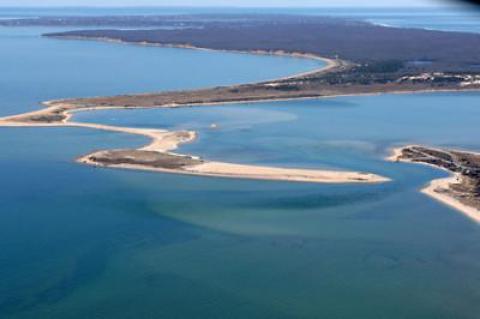 The Gems of Napeague
The Gems of NapeagueNapeague Harbor is the only tidal embayment tributary to the Peconic Estuary that has never had any part of its surface waters closed to shellfishing because of pollution.
As far as animals without backbones are concerned, insects rule the land, crustaceans co-rule the seas.
 On the Water: The Waters Are Teeming
On the Water: The Waters Are TeemingSunday was Oct. 9, but it felt like Aug. 9. The parking lot at Montauk Point State Park was full. Fishing boats were spread out on the tide line like stepping stones leading all the way to Block Island.
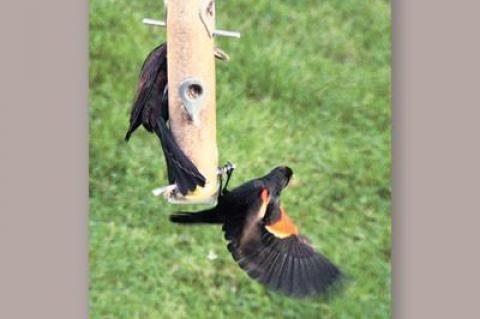 Nature Notes: Heralding Fall
Nature Notes: Heralding FallThe leaves are beginning to color up. The tupelos, dogwoods, red maples, and sassafras are always the first to turn.
“Insane,” was how Ken Rafferty, a light-tackle and fly-fishing guide described the action from Shagwong to Montauk Point over the weekend.
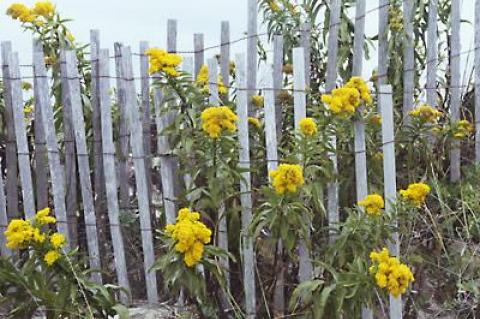 Nature Notes: Wildflowers in Their Glory
Nature Notes: Wildflowers in Their GloryOnly two more weeks to enjoy the wildflowers. Unlike most parts of the country where the spring and summer blooms are the brightest, most colorful, and most abundant, Long Island’s best wildflower season is in the first month of fall. California and Oregon, for example, have only a few species of asters, while Long Island has many. Though those two states have their share of goldenrods, they are few and far between, whereas on Long Island you often find four or five species blooming in close proximity.
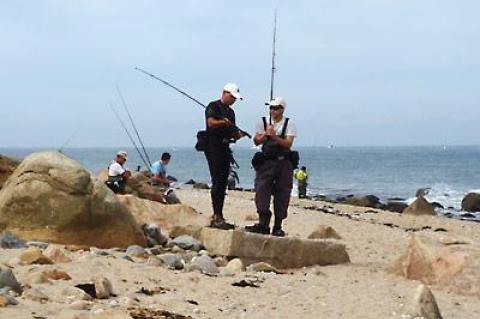 On the Water: Blues Away, Bass Will Play
On the Water: Blues Away, Bass Will PlayIt’s like reading tea leaves or entrails — cue the eerie music: What does it portend when surfcasters see schools of small bunker and large sand eels in the wash, but not a lot of bluefish?
Fall fell last Thursday and the new moon rose on Tuesday, and yet, tons of baitfish and very few bluefish. This is the season when it’s not unusual to see acres of bluefish in boiling feeding frenzies that mass at places like Turtle Cove on the west side of the Montauk Lighthouse, or are carried on the tide along the south-facing beaches.
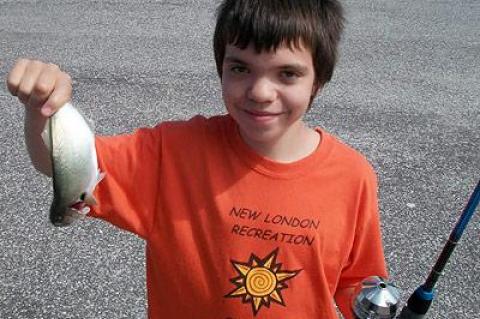 Inshore Action Abounds
Inshore Action AboundsThe crisp air and silvery afternoon light tell us autumn is here, the season of great surf and equally great fishing. Both occurred in spades over the weekend.
Hurricane Katia remained mercifully offshore, but her swells fired up local surf spots as well as the beaches of Long Beach, where the Quicksilver Pro surfing contest finals were held on Saturday.
Offshore fishing was frustrated by strong easterly winds, but the inshore striped bass fishing came alive.
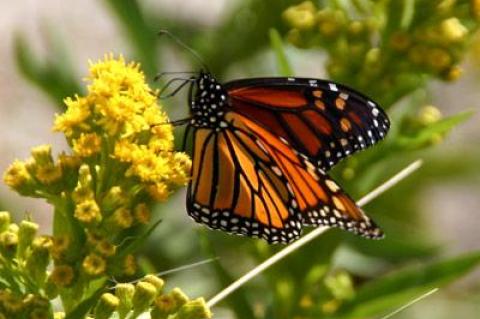 Nature Notes: A Great Migration
Nature Notes: A Great MigrationThis past week saw the beginning of what could promise to be one of the greatest monarch butterfly migrations in a long time. The wind was gentle and blowing out of the southwest and south-southwest on most days after Tropical Storm Irene’s passage. At this time of year the monarchs fresh out of their chrysalises are heading south and southwest, into the wind, and following the shoreline. Since before the year 2000 here on eastern Long Island we have seen very little in the way of monarchs come the end of summer.
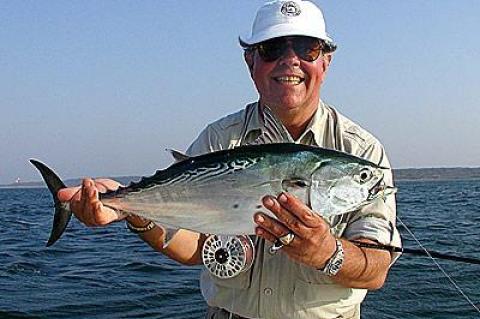 On the Water: False Albies Are Here
On the Water: False Albies Are HereBoaters should take care. Logs and other debris washed into the sea from flooded rivers during Tropical Storm Irene continue to haunt local waters and are virtually invisible in any kind of choppy conditions.
Sailing on Sunday from Fort Pond Bay in Montauk to Eastern Plains Point on the east side of Gardiner’s Island, our sailboat, moving at about seven knots, nearly struck a log as long as a telephone pole. It could have un-pintled the rudder. Damage to a faster-moving power boat would have been far worse.
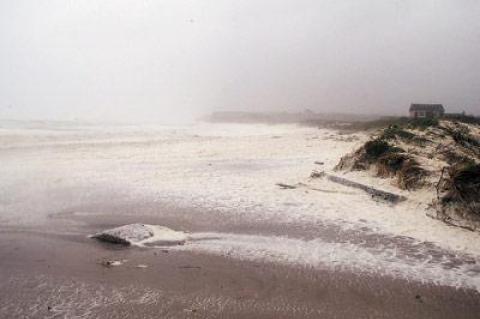 Nature Notes: Hullabaloo Was Worth It
Nature Notes: Hullabaloo Was Worth ItHurricane Irene has come and gone. Last year Earl swept up the coast near the end of August with a great deal of hullabaloo. It missed us but did carry away some of Montauk’s valuable ocean beach sand. Irene had decidedly better aim and hit when the tide was high, washing away beaches and dunes from the Rockaways to Montauk Point.
If you take a ride out to Montauk via the parkway, you will pass through Hither Woods. As you motor along, keep your eyes on the rusting guardrails. Just behind them you will find a very healthy four-foot-high hedge of big bluestem grass, one of the original staples of old Montauk’s bountiful prairie. At one time it stretched from the western end of the Napeague isthmus to the point, a few trees here and there, but mostly grasses and wildflowers.
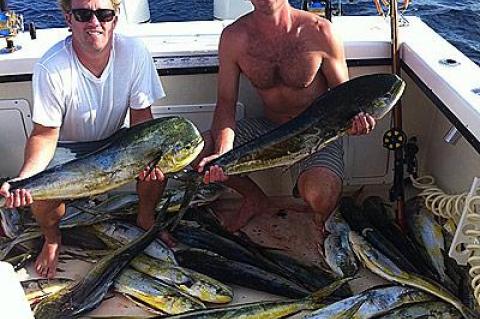 On the Water - Blues: Crabs, Sharks, Fish
On the Water - Blues: Crabs, Sharks, FishBy all accounts the blue-claw crab population is bursting at Georgica Pond’s scenic seams. According to one crabber, chicken-neck bait is hardly necessary. A slow walk in the shallows with an occasional stop will bring blue crabs to your feet. Best not to linger too long. Or, have a scoop net handy.
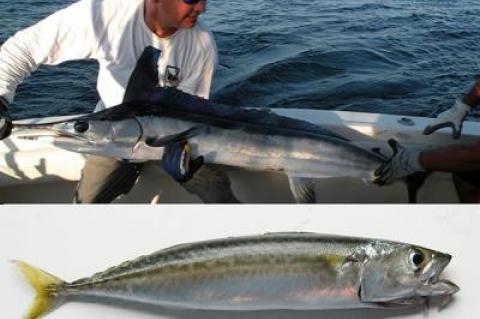 On the Water: Tinker Mackerel, Talk of Tuna
On the Water: Tinker Mackerel, Talk of TunaIt’s the time of year for bamboo poles, buckets, and spearing bait. Snapper bluefish are swarming around local docks in profusion.
Anglers may dismiss them, but we owe a lot to bluefish. They are the species that, in these parts anyway, hook sportfishermen when they and their quarry are the age of Huck and Tom, even younger. It’s a good time to teach kids about conservation. Only 10 snappers can be taken if they measure less than 12 inches.
The waters are warming up and so are fishing and the fish. Is it the return of the menhaden in large numbers that has something to do with it? Is it global warming? Is it a lot of things?
We are under the spell of a full moon. The tides will run very high. The horseshoe crabs will come into the shallows and breed for the last time. The eggs deposited in the intertidal sands in May will hatch out and a new generation of these prehistoric creatures will have been spawned in one of nature’s greatest and oldest cycles.
The northern puffer, blowfish, or bayman’s bottlefish, perhaps our most fascinating local marine fish, is making a comeback after a hiatus of almost two decades. It is one of some 121 different puffer species found throughout the world’s oceans, and one that kids wading and swimming in Long Island waters learn about at a very early age.
It’s the fish and fishing season. Long Island has a lot of different kinds of fishes and a lot of different kinds of fishermen and fisherwomen. If we count the tropicals that are more and more common in the south bays with each passing year, we have more than 200 different species of fish to pick from.
Where did they come from and how did they get here?
With the first shark tournament of the season coming up this weekend, held from the Star Island Yacht Club in Montauk, a tale told by a visiting surfer and all-around waterman gets to the heart of the gut-level feelings stirred by the natural, and unnatural, hunting instincts of the big ocean predators.
“Sava began to whine,” Billy Hamilton said of his 10-year-old yellow Lab. The dog was in her familiar spot, standing near the nose of Hamilton’s surfboard waiting for the next set of waves.
On Friday afternoon I witnessed something for the first time in my 75 years. I was standing with a companion on...
When it comes to fishing, this is the time of year when anglers put their ears to the railroad tracks — metaphorically speaking, of course — when ears become radar, eyes become sonar, noses become bloodhounds, when rumors grow like...
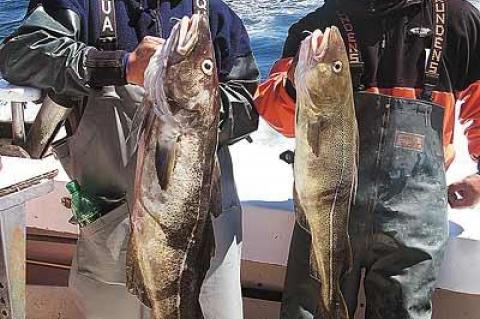 On the Water: Lots of Cod, Few Boats
On the Water: Lots of Cod, Few BoatsThe late, great Capt. Frank Mundus, Montauk’s Monster Man, said that during his many years of ferrying charter clients offshore to come to grips with their various demons by way of tangling with big sharks...
It seems that there are more seals around this year than ever before. Just the other day Peter Van Scoyoc saw three basking on the shore of Hicks Island. There’s been at least one seal in Three Mile Harbor all winter...
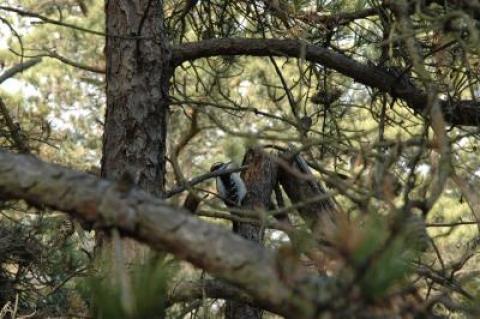 The Big Five
The Big FiveWith more than 95 percent of the deciduous leaves fallen, including those of understory and shrub-layer deciduous species, it is a very good time to familiarize yourself with the native evergreens, of which there are several.

